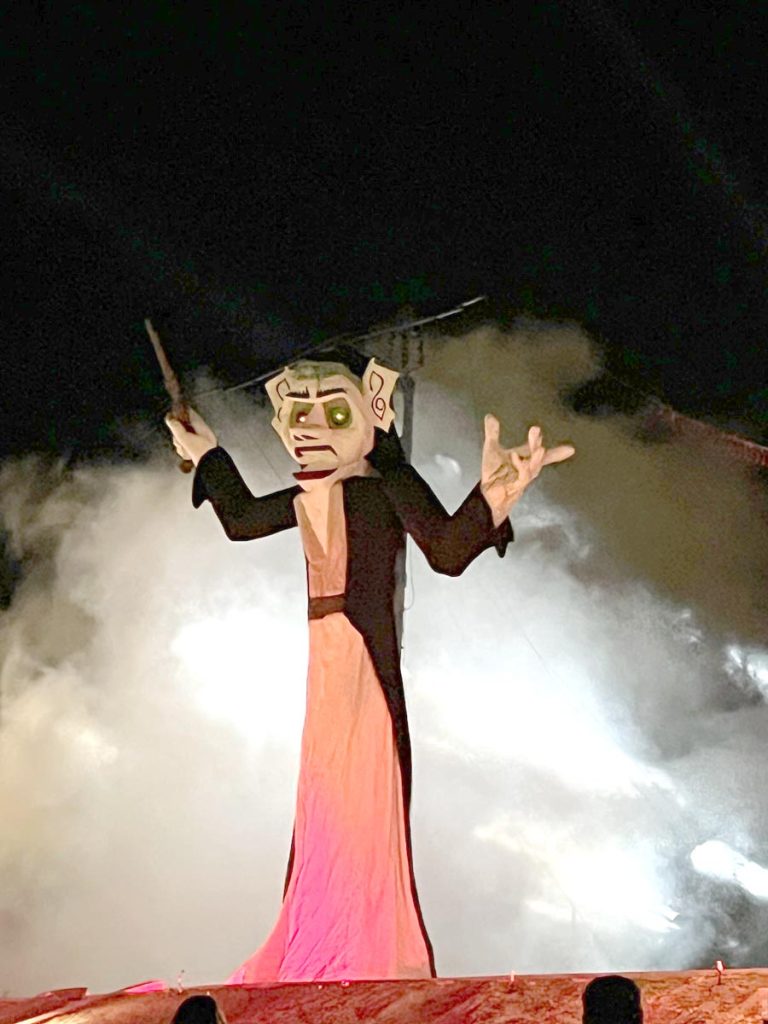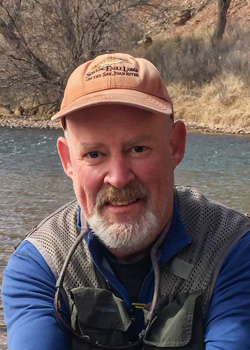
For readers unfamiliar with Santa Fe’s tradition of Zozobra, it’s essentially like El Cucui in Questa’s annual Cambalache celebration (October 1 at the Questa Farmers Market site). Similarly, the 50-foot-tall Zozobra is set ablaze, and with him a year’s worth of anxiety and woe. Leading up to the burning in early September, Santa Feans can submit their penas (sorrows) – divorce papers, paid mortgages, etc. – and find solace in the knowledge that said penas will eventually explode into the New Mexico night in a multicolored bloom of fireworks.
It’s a common theme across many cultures, Cucui, Zozobra, and the Zozobra knockoff known as Burning Man out in Nevada. When I lived in other states, my friends and I would often begin September by burning a newspaper effigy in honor of my Santa Fe upbringing. The instinct to annihilate sorrow is obviously universal, and since we first domesticated fire, human beings have had a love affair with combustion.
Speaking of combustion, this year’s Zozobra took place on a day that barely cooled off after sundown. I’d been up in Canjilon looking at a stream restoration project that would hopefully provide cool water for cutthroat trout and help local parciantes (individual irrigators) squeeze another watering or two out of the irrigation season. There wasn’t much talk about climate change as we surveyed the project, and on the drive back home I tried to pretend that 100 degrees in September in Espanola, just like our monsoon-free summer, was perfectly normal.
In line to get into Zozobra, I met a couple from Los Alamos, the three of us grateful to be waiting in the shade of the big pink church. The wife researches climate response technologies at the lab, green hydrogen, nuclear, and carbon capture. She’s optimistic we’ll be able to solve this if we can just come up with actual plans, as opposed to staging traffic-blocking protests and gluing ourselves to fine art.
For the record, I believe humans have affected the climate with our industrial activities. At the same time, I’ve lost patience with the notion that the reason we haven’t done more is due to our collective lack of awareness. Everyone knows about climate change, at least everyone who should, so the discussion should turn towards what that means and what to do to make human and non-human lives less brutal and more productive.
By my incomplete understanding, the atmosphere is currently made up of approximately 4.1 ten-thousandths of carbon dioxide, an increase of about 1.3 ten-thousandths since the dawn of the Industrial Age around 200 years ago. It’s difficult to fathom how such a concentration could affect temperature so much, or how it could supposedly account for a spike in global plant flourishing, as some climate skeptics claim. I do know it’s getting hotter, though.
Some old-timers in the Jemez recently told me they’ve experienced much worse over the years. And on the Rio San Antonio a couple weeks ago, another scorcher of a day, the water temperature was surprisingly cool where beavers had room to build; also surprising, there were pure cutthroat trout in the ponds and not just brown trout. Along with the account from the researcher I met in the Zozobra line, these little anecdotes — the history of dire precedents that came and went, nature persisting come hell or low water — keep my focus forward. If nothing else, it’s a relief to remember that beavers and cutthroats are too busy to read the news.
Looking forward helps me keep a positive frame of mind amid the clucking of Chicken Littles. Not that they’re clucking about nothing, just that it gets too loud sometimes to hear the small ideas that could make a difference at the local level. Like restoring streams so they can store water in the ground and extend flows during the summer. Like taking advantage of beavers’ free labor and piloting energy projects on a Questa-sized scale. With all the federal infrastructure money washing around, I’m wondering if more of it could be spent on installing rooftop solar in schools in poor communities so that students could learn in well-cooled and heated classrooms.
Call me naïve, but I still believe that climate change can become less about arguing and more about people coming together to address a shared predicament in their own small ways. Maybe the penas in Zozobra’s exploding head can become less about grief and more about hope.



